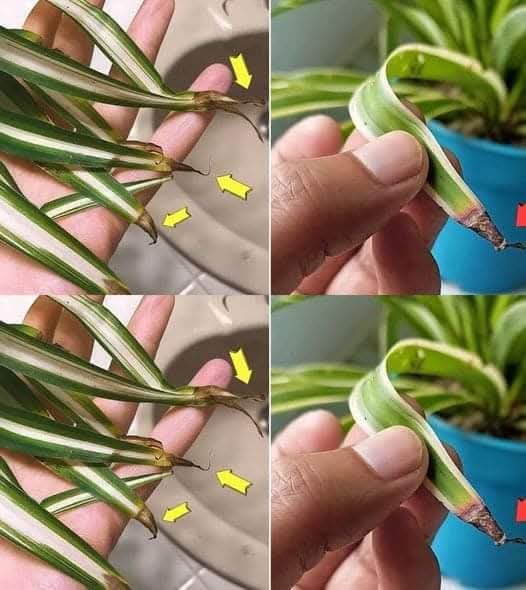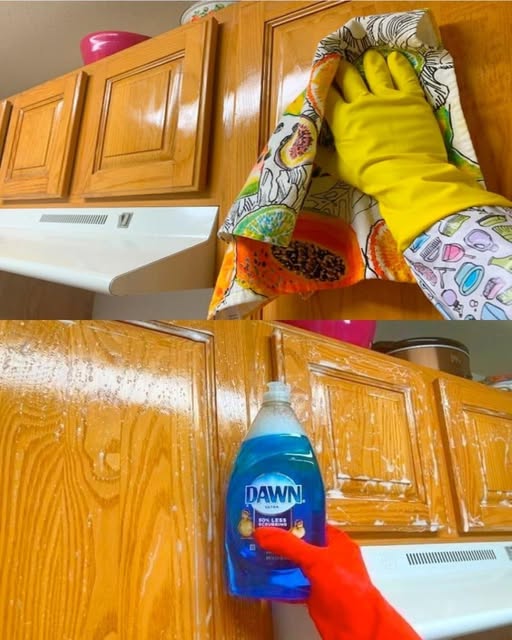Spider plants (Chlorophytum comosum) are popular houseplants known for their attractive green and white striped leaves, as well as their ability to purify the air. However, like any plant, spider plants can face issues that affect their health, one of the most common being brown tips on the leaves. Understanding the reasons for this issue and how to remedy it can help ensure your spider plant remains healthy and vibrant.
1. Overwatering or Underwatering
Overwatering: One of the primary causes of brown tips in spider plants is overwatering. When you water a plant too frequently, the roots may not get enough oxygen, and they can begin to rot. Root rot is a serious condition that leads to the plant’s inability to take up nutrients and water properly, resulting in the tips of the leaves turning brown. The symptoms of overwatering often include yellowing leaves, a mushy stem, and a musty odor from the soil.
Underwatering: On the other hand, underwatering can also lead to brown leaf tips. When spider plants don’t receive enough water, they start to dehydrate. As the plant struggles to conserve moisture, the leaf tips, which are the furthest from the roots, dry out and turn brown. You may also notice that the leaves start to curl or become crispy.
Solution: To prevent overwatering or underwatering, it’s essential to establish a proper watering routine. Water the plant when the top inch of soil feels dry to the touch. Make sure the pot has proper drainage to allow excess water to escape, as stagnant water at the bottom of the pot can lead to root rot. On the other hand, if you notice your plant’s leaves are crisping up due to dehydration, water the plant thoroughly, allowing water to flow out of the drainage holes to ensure the roots receive adequate moisture.
2. Poor Water Quality
Tap water often contains chlorine, fluoride, and mineral salts, all of which can cause damage to your spider plant over time. Chlorine and fluoride, in particular, can cause leaf burn, leading to brown tips. Additionally, hard water, which contains high levels of calcium and magnesium, can cause mineral buildup in the soil, leading to brown spots or streaks on the leaves. Over time, this accumulation of minerals can harm the plant.
Solution: To avoid water quality issues, try using filtered water, rainwater, or let tap water sit for 24 hours before using it on your plant. This allows the chlorine and other volatile substances to evaporate, reducing the risk of leaf burn. If you live in an area with hard water, you might consider using distilled or softened water to prevent mineral buildup in the soil.
3. Excessive Sunlight Exposure
While spider plants do well in bright, indirect light, too much direct sunlight can cause the tips of the leaves to scorch. This is because the plant’s delicate leaves are not suited to prolonged exposure to direct sunlight, especially if the sun is particularly intense. When spider plants are exposed to too much sunlight, the leaf tips can dry out and turn brown. You may also notice that the plant’s colors become faded or washed out.
Solution: To avoid sunburn, place your spider plant in a location where it will receive bright, indirect light. A spot near a window with sheer curtains or filtered sunlight is ideal. If you notice your plant getting too much direct sunlight, consider moving it to a more shaded area or provide some form of light filtering, such as using blinds or sheer curtains.
4. Nutrient Deficiency
Nutrient deficiencies can also lead to brown tips on spider plant leaves. Spider plants require a range of nutrients to stay healthy, including nitrogen, potassium, and phosphorus. If the plant doesn’t receive enough of these nutrients, particularly nitrogen and potassium, the leaf tips may turn brown or yellow. Deficiencies in these key nutrients can cause the plant to become weak and less able to tolerate stress from environmental factors such as temperature changes or pests.
Solution: Fertilize your spider plant regularly to provide the necessary nutrients for healthy growth. Use a balanced liquid fertilizer that is high in nitrogen and potassium during the growing season (spring and summer). Apply the fertilizer according to the instructions on the packaging, and be sure not to over-fertilize, as this can lead to nutrient burn, which also causes brown tips.
5. Low Humidity
Spider plants are native to tropical and subtropical regions, where humidity levels are generally higher than in many homes, especially in the winter months when heating systems dry out the air. Low humidity levels can cause the tips of the leaves to dry out and turn brown, a condition that is especially common during the colder months.
Solution: To increase the humidity around your spider plant, you can place it on a tray filled with pebbles and water. This allows the plant to absorb moisture from the air as the water evaporates. Alternatively, you can use a humidifier to maintain optimal humidity levels or mist the plant’s leaves with water, although this may not be as effective as other methods.
6. Root or Pot Issues
Spider plants can become root-bound if they are kept in the same pot for too long. When the plant becomes root-bound, the roots are tightly packed and may not be able to absorb enough water and nutrients. This can result in poor plant health and brown leaf tips. Additionally, if the pot is too small or lacks proper drainage, it can lead to uneven watering, which further stresses the plant.
Solution: Check if your spider plant is root-bound by gently removing it from its pot and inspecting the root system. If the roots are densely packed or growing in circles, it may be time to repot the plant into a larger container. Choose a pot that is 1-2 inches larger in diameter than the current one and ensure it has drainage holes to prevent water from accumulating at the bottom.
7. Pests or Diseases
Although spider plants are relatively hardy, they can still fall victim to pests and diseases, which can cause damage to their leaves. Common pests include mealybugs, aphids, and spider mites, which suck the sap from the leaves and can lead to brown spots or tips. Fungal infections can also contribute to the browning of the tips, particularly if the plant has been stressed by overwatering or poor air circulation.
Solution: Regularly inspect your spider plant for signs of pests or disease. Look for discolored spots, a sticky residue on the leaves, or visible insects. If you notice an infestation, treat the plant with an insecticidal soap, neem oil, or a mild fungicide to get rid of the pests or fungus. Be sure to follow the instructions on the product and reapply as needed.
8. Natural Aging
It’s normal for older leaves to eventually turn brown, especially as they age and reach the end of their lifespan. If your spider plant has several mature leaves with brown tips or edges, this may simply be due to the natural aging process. In this case, there’s no need to worry, as it’s a normal part of the plant’s life cycle.
Solution: Regularly prune your spider plant by removing any brown, dead, or damaged leaves. This will help the plant conserve energy and promote new growth. Simply trim the brown tips or cut off the entire leaf at the base, being careful not to damage the healthy parts of the plant.
Conclusion
Brown tips on spider plants are a common problem that can be caused by a variety of factors, including overwatering, poor water quality, excessive sunlight, nutrient deficiencies, low humidity, root issues, pests, and natural aging. By understanding the root causes and taking proactive steps to address them, you can keep your spider plant healthy and vibrant. Regular care, proper watering, and attention to environmental factors like light and humidity will help ensure that your spider plant continues to thrive and add beauty to your home.





